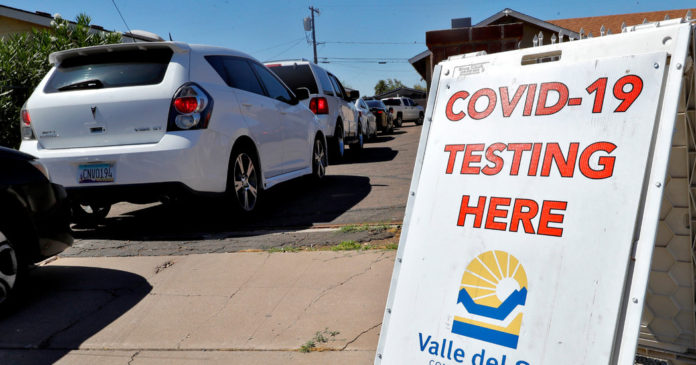“I’m continuously frustrated that this is still a problem,” said Kelly Wroblewski, director of infectious diseases at the Association of Public Health Laboratories. “We should be at a place where getting a test isn’t as challenging as it used to be.”
National testing capacity has expanded significantly since the start of the pandemic, recently reaching half a million daily tests. Federal health officials testified at a congressional hearing this week that the country has the capacity to do 15 million coronavirus tests per month; they expect that number to reach 40 million to 50 million by the fall. Experts have estimated that at least 500,000 coronavirus tests daily are what the country needs to safely reopen.
But that target is a nationwide figure, and it does not account for extra testing that states and cities need to manage large outbreaks. No coordinating entity exists to help overwhelmed labs find extra capacity elsewhere.
Testing demands have grown with each day as states reopen, with employers looking to check workers who are back on the job. Some states now require certain health facilities, such as nursing homes, to regularly test their employees. Local governments are setting up new contact-tracing units that will also require ready access to tests.
Federal officials have offered mixed messages about what testing capacity is needed. The Trump administration recently phased out support for some federally funded testing sites, transferring control to the states. At a rally last week in Tulsa, Okla., President Trump said he had asked to “slow the testing down” because it was increasing the number of confirmed cases. Anthony Fauci, director of the National Institute of Allergy and Infectious Diseases, testified before Congress on Tuesday that he had not received any instructions to reduce testing. Instead, he told legislators that “we need to do much, much more surveillance testing.”
Ms. Wroblewski’s organization has run regular surveys of its members to measure their testing capacity. Of the 88 laboratories that responded last week, 13 said they faced challenges meeting demand.
Those struggling to keep up, Ms. Wroblewski said, tended to be labs serving areas facing a new and large outbreak. “The nature of public lab testing is that they tend to look into outbreaks,” she said. “There are cases of increased demand, and it can take a week to adjust, to pull the staff and change the work flow.”
Source : Nytimes














